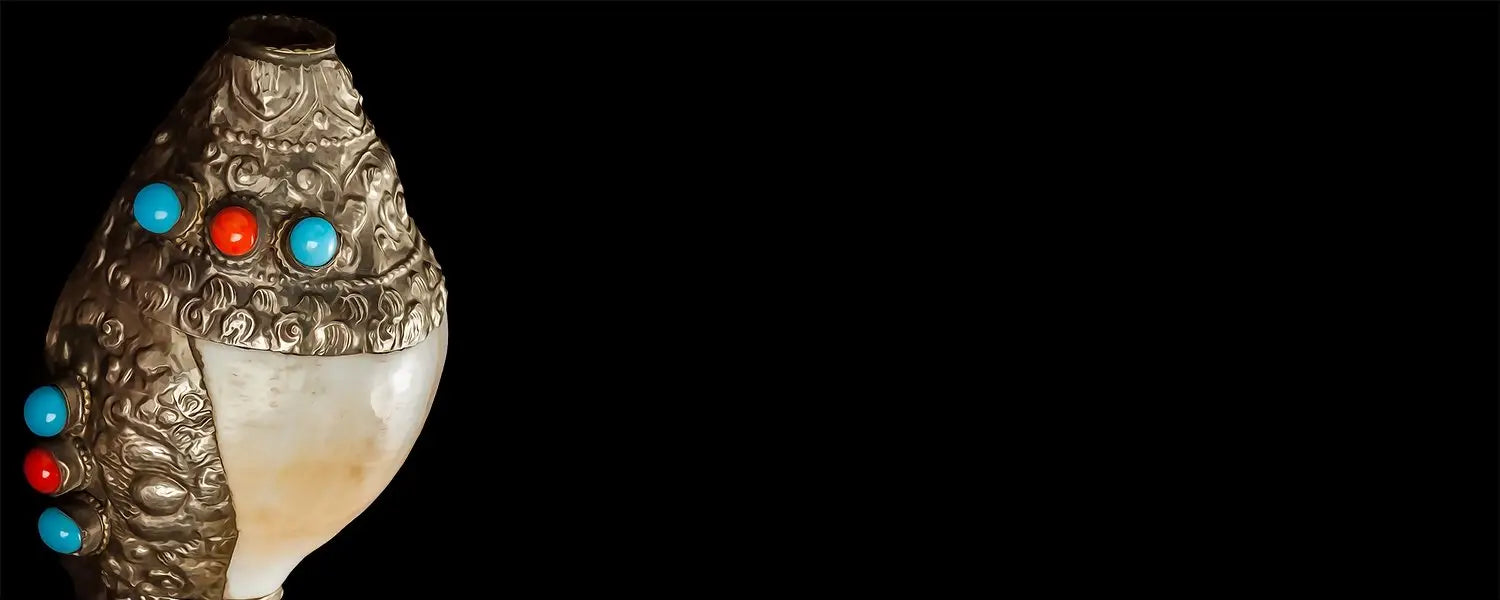The symbol of the Buddhist conch, or the conch shell (Sanskrit shankha; Tibetan dung dkar), has survived as the original horn trumpet since time immemorial. Ancient Indian epics describe how each mythical war hero carried a powerful white conch shell, which often had a personal name.
The Conch or Shell in Buddhism
It is one of the main emblems of Vishnu, and its conch is called Panchajanya, which means "having control over the five classes of beings".
The powerful conch of Arjuna (hero of the Mahabharata) was known as Devadatta, whose triumphant explosion terrorized the enemy. As a war horn proclaiming battle, the conch is similar to the bugle. It is an emblem of power, authority and sovereignty whose breath is believed to banish evil spirits, avert natural disasters and scare away venomous creatures.
In Tibetan Buddhism
Today, in its very tame avatar, the conch is used in Tibetan Buddhism to bring together religious assemblies. During the actual practice of rituals, it is used both as a musical instrument and as a container for holy water.
Ancient Indian belief classifies the conch into male and female varieties. The thicker-shelled bulbous conch would be the male (purusha) and the thin-shelled conch would be the female (shankhini).
- The smooth white conch represents the caste of Brahmins (priests)
- The red conch, the kshatriyas (warriors)
- The yellow conch, the Vaishyas (merchants)
- The gray conch, the shudras (workers)
In addition, there is a basic classification of conch shells in nature: those that turn to the left and those that turn to the right. Shells that curl to the right in a clockwise direction are a rarity and are considered particularly sacred. The movement of the conch on the right is believed to echo the celestial movement of the sun, moon, planets and stars across the heavens. The hair spirals to the right on Buddha's head, as do the fine hairs on his body, the long curl between his eyebrows (urna), and also the conical swirl of his navel.< /p>
Vajrayana Buddhism absorbed the conch as a symbol that fearlessly proclaimed the truth of dharma. Among theeight symbols, it represents the fame of the Buddha's teaching, which spreads in all directions like the sound of the conch's trumpet.
In addition to the throat of Buddha, the conch also appears as an auspicious mark on the soles, palms, limbs, chest or forehead of a divinely gifted being.
While we still live in ignorance, we experience negative emotions that eventually cause disagreements and distractions. The victory banner symbolizes triumph over negative emotions.
Today, the banner is typically found as a flag on the roof of temples as a sign of victory. In the Mahabharata, Krishna's chariot is also adorned with a banner bearing the image of the monkey god Hanuman.
Hanuman represents our mischievous nature which eventually gives in to our dark and sinful thoughts. You know those moments of temptation when you want something, but your ego knows you shouldn't....
...that's the God Hanuman.
Overcoming this aspect of desire is a personal victory over your emotions. The Banner of Victory in Buddhism celebrates the achievement of mastery over all negative emotions.
Other sources on the conch in Buddhism: https://fr.wikipedia.org/wiki/Ashtamangala
Additional articles: Buddhist symbols and their meaning











































